How to Make a Good Shopify Website 2025
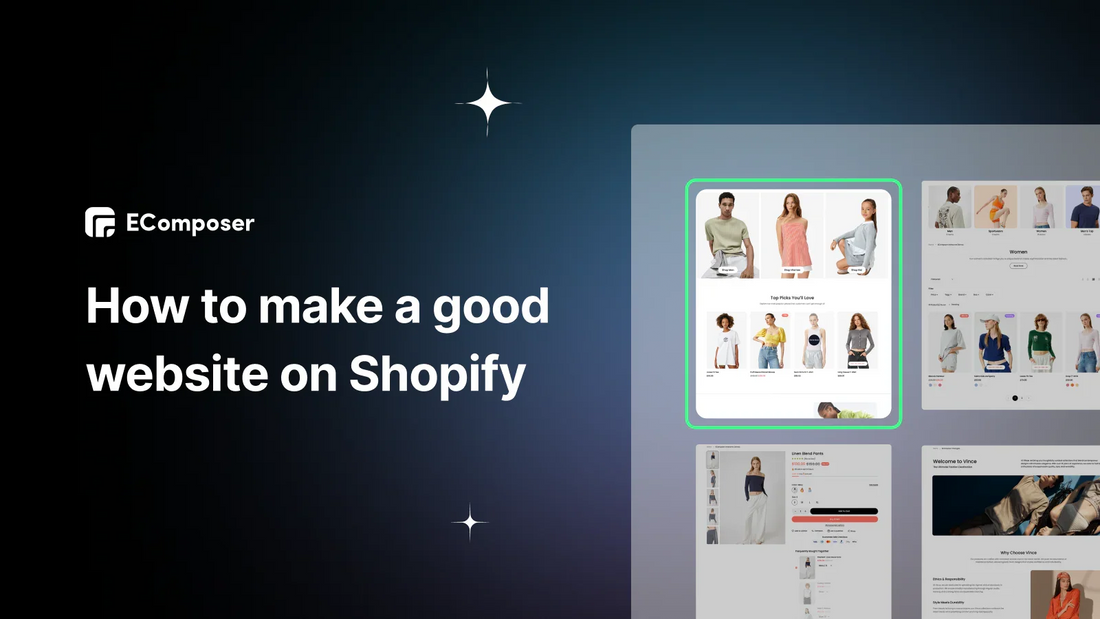
Table Of Contents
The year is 2025, and if you’re serious about selling in 2025, your Shopify store needs to do more than just exist. It needs to be both good-looking and run smoothly.
Luckily, making a sharp, scroll-stopping Shopify site isn’t just for tech geniuses anymore. Whether you're starting from scratch or trying to glow-up your current store, we’ve got you covered with a comprehensive guide to make a Good Shopify Website in 2025. Let’s break it down, one good page at a time.
What Makes a Good Shopify Website?

(Image Source: EComposer’s Template)
Okay, so what actually makes a Shopify website “good”? Is it vibes? Fonts that whisper sweet nothings? A homepage that looks like it was blessed by a graphic design deity?
Well, kinda. But also: not really.
A good Shopify site isn’t just about being pretty (though we do love a well-placed gradient). It’s about functionality, clarity, and vibes that convert. It should look great and make it ridiculously easy for people to browse, trust you, and hit that sweet, sweet “Buy Now” button.
Here’s what separates the “meh” from the memorable:
- Clean, modern design: No clutter, no chaos. Just a layout that guides your visitors, not confuses them.
- Mobile-friendliness: Because most people shop with one thumb while lying on the couch.
- Fast loading speed: If your site loads slower than a toddler getting ready for bed, people will leave.
- Clear product photos: Blurry pics won’t cut it in 2025. High-quality visuals are the new storefront window.
- Easy navigation: Think: menus that make sense and buttons that actually take you where you want to go.
- Strong branding: Colors, fonts, copy, and tone that say “Hey, this is so us.”
- Trust signals: Reviews, testimonials, secure checkout badges; anything that makes a shopper think, “Okay, I’m safe here.”
Bottom line: your Shopify site should feel like walking into a beautiful, well-organized store with good lighting and a friendly vibe. You want people to linger, not leg it.
Haven’t had a Shopify account yet?
Take advantage of Shopify's $1 deal and explore any plan from A to Z in your first 3 months!
Grab $1 Deal Now!What to Do Before Building Your Shopify Website
1. Know What Your Website is For
Before you dive headfirst into themes, fonts, and product grids, let’s pause for a tiny existential crisis: Why are you building a Shopify website in the first place?
Sounds dramatic, but it matters.
Are you launching a new product line? Building a brand? Trying to quit your 9-to-5 and become the Beyoncé of handmade candles? Your goal isn’t just a box to tick; it’s the compass for every design, layout, and “Add to Cart” button you choose.
Knowing your why helps you figure out your what:
- What kind of content do you need?
- What do your customers want to see first?
- What does success look like for this site (besides going viral on TikTok)?
If you skip this step, you might risk building a beautiful digital palace with zero idea of who’s supposed to walk through the doors.
So take a beat. Get clear on your mission. Then you can start designing with purpose, and not just vibes.
2. Find Inspiration for Your Store’s Look

(Image Source: Dribbble)
Okay, you've had your moment of deep reflection. Now it's time for the fun part: vibe hunting.
Before you start dragging and dropping your way into Shopify greatness, you need a sense of style. Not “I wear black because it’s easy” style; we’re talking brand visuals: fonts, colors, layouts, moods. Is your store sleek and minimal? Bold and playful? Vintage grandma-core but, like, cool?
- Scroll Pinterest or Dribbble. Creep on your favorite brands. Stalk competitors like a polite internet ninja. Blogging for experts' ideas. Screenshot anything that makes you feel something; preferably something other than “ugh.”
- And hey, don’t just look at Shopify stores. Great design lives everywhere. Your next homepage inspo could come from a podcast website, a skincare brand, or a cereal box that oddly slaps.
Bottom line: gather a mood board (digital or messy real-life one, your call) before you design. It'll save you from the dreaded “why does my site look like a PowerPoint from 2007?” moment.
You’ve got taste. Trust it.
3. Plan Your Website Layout & Pages
Now that your mood board’s giving “aesthetic” and your vision is clear(ish), it’s time to figure out what goes where, like moving into a new apartment but for your digital storefront.
Ask yourself: what do people need to see first when they land on your site? (Hint: it’s not your life story or a blurry photo of your cat, unless you’re selling cat merch. In which case, carry on.)
Start with the essentials:
- A Home page that makes a killer first impression
- A Product page that actually makes people want to buy things
- A Collection page if you’ve got more than a handful of products
- An About page that isn’t just “We love coffee and long walks”
- And a Contact page so people know where to send their fan mail (or refund requests; life happens)
Map it all out; literally, like a flowchart or a scribble on a napkin. The goal is to make the customer journey feel smooth, not like they’re solving a riddle just to buy a T-shirt.
Your future self will thank you. Your visitors will stay longer. And your store? It’ll look like it actually knows what it’s doing.
Having trouble designing all your store pages? EComposer makes it easy. Just simply drag and drop elements, no coding needed. With 400+ templates and 28+ built-in CRO tools, you can build your Shopify store faster and better than ever before.
4. Create a Brand Style Guide

Before you start dragging buttons and banners around like you're redecorating a Sims house, pause. Breathe. Ask yourself: What does my brand actually look and sound like?
That’s where your brand style guide comes in. Think of it as your store’s fashion sense and personality; all wrapped up in one tidy cheat sheet.
You’ll want to decide on:
- Colors: Pick a palette and commit. No one trusts a brand that uses neon green and dusty rose, and Comic Sans blue.
- Fonts: Choose one or two that are readable and say “I have my life together.”
- Voice & tone: Are you friendly and quirky? Calm and professional? Mysterious but approachable like a hot barista in a poetry café?
Having a clear style guide keeps things consistent; on your website, in your emails, even on that TikTok you reluctantly made. It’s what makes your store feel like you, instead of a chaotic Pinterest board with commitment issues.
So put in a little extra effort now, and save yourself from a future identity crisis (your brand’s, not yours; hopefully).
How to Make a Good Shopify Website Design
1. Choosing the Right Shopify Theme

(Image Source: Envato Market)
This is the part where you try on outfits in front of the mirror and ask, “Does this make my store look successful?”
Your Shopify theme is basically the outfit your website wears every day. It's the first impression, the vibe check, the “do I trust this brand with my money?” moment. And with thousands of themes out there, free, paid, minimalist, artsy, emoji overload, it’s easy to spiral into decision fatigue.
So here’s the cheat code:
- Go for clarity over cleverness. Your customers should know what you’re selling without squinting.
- Make sure it’s mobile-friendly. If it looks like a broken jigsaw puzzle on a phone, it’s a no.
- Test the speed. Slow websites = lost sales + deep personal shame.
- Look for customization options. You want a theme that bends with your brand, not one that demands you become a full-stack developer to change the font size.
Bonus tip: Shopify's theme store and Envato Market let you preview themes with your products before you commit. It's like trying clothes on in the fitting room, without the fluorescent lighting and existential crisis.
Find out more details on Multipurpose Shopify Theme Recommendations here.
2. Designing a Homepage That Hooks Visitors

Your homepage is your store’s opening line, the “hey, can I interest you in something shiny before you scroll away forever?” moment.
So, no pressure… but it needs to hook people fast.
Think of it like a movie trailer. You’ve got 3 seconds (maybe five if they had coffee) to show who you are, what you sell, and why they should care. Here’s how to nail it:
- Headline that slaps: Something short, clear, and confident. “We sell bags” is fine. “Bags built for chaos” is better.
- Hero image that sells the vibe: Product in action. Clean. Crisp. No blurry iPhone pics from 2017.
- One CTA, not fifty: Tell people exactly what to do next. “Shop the collection” > “Join our mailing list, read our blog, enter our contest, maybe pet a virtual dog?”
- Highlight your best-sellers or new arrivals: Give them a reason to scroll just a liiiittle more.
- Social proof: A juicy testimonial, a star rating, a “10,000+ happy customers” brag. People love receipts.
Your homepage doesn’t have to be flashy. It just has to feel like your brand, speak to your audience, and make it super obvious what’s in it for them. Make it scroll-stopping. Make it snackable. Make it… you.
3. Optimizing Navigation for a Smooth User Experience

(Image Source: Shopify Navigation)
Your store’s navigation shouldn’t feel like a cryptic treasure map. No customer wants to play “Where’s Waldo?” just to find the Add to Cart button.
If your menu is cluttered, confusing, or hiding key pages like some sort of Shopify escape room, people will bounce faster than you can say “Wait, we have a sale!”
Here’s how to keep things smooth and scrollable:
- Keep your drop-down menu simple: “Shop,” “About,” “Contact.” Maybe “Sale” if you’re feeling spicy. You’re not building NASA’s intranet here.
- Group your products logically: If someone clicks “Clothing,” don’t make them dig through socks, coats, and banana costumes in the same pile.
- Add a search bar: Because sometimes people know exactly what they want, and they don’t want to be tested for it.
- Sticky navigation? Yes please. Let your menu stay visible as folks scroll. It's like your helpful sidekick… but digital.
- Mobile-friendly = non-negotiable: People are shopping on their phones. Make sure they’re not rage-tapping through a maze of drop-down menus.
Basically, your site should feel like walking into a neat, well-labeled store, not like stepping into a hoarder’s basement. Keep it clean. Keep it obvious. Keep it clickable.
4. Creating Product Pages That Actually Sell

Let’s be honest: your product page shouldn’t feel like a blind date where the other person only says, “Trust me, I’m great.” Nope. You’ve gotta show the goods, and do it well.
A good product page does more than list a price and toss in a blurry photo taken at midnight with your cousin’s Motorola Razr. It needs to convince people. Gently. Charmingly. Like the Ryan Gosling of web pages.
Here’s how to make your product pages pull their weight:
- Photos matter: High-quality images from different angles. Bonus points for Zoom features or video. If it looks like you took it in a dimly lit garage, retake it.
- Descriptions that don’t suck: Say what it is, why it’s awesome, and how it’ll improve someone’s life. Skip the fluff. Think: “soft as clouds,” not “crafted using innovative fabric solutions.”
- Clear pricing: No games. No “click to find out.” This isn’t Vegas.
- Trust signals: Reviews, testimonials, or even “Over 1,000 sold!” badges. People like to know they’re not buying the digital equivalent of a sketchy alley hot dog.
- Add-to-Cart buttons that pop: Make it obvious. Make it bold. Make it shout (politely): “Buy me!”
Because a strong product page doesn’t beg, it subtly winks and says, “You know you want this.” And before your customer knows it, boom, checkout.
5. Checkout Process: Keep It Fast & Friction-Free

(Image Source: Ecomus Theme)
If your checkout process feels like filing taxes or assembling IKEA furniture without the manual, congrats; you just lost a sale.
Here’s the thing: by the time someone gets to checkout, they’re basically whispering “take my money.” Your job? Don’t scare them off with a 12-step ritual, a mandatory account signup, or three surprise shipping fees that magically appear like ghosts from abandoned carts past.
So, how do you keep it smooth like butter?
- Guest checkout = yes, please. Not everyone wants to commit right away. Let them buy without creating an account. It’s a fling, not a marriage.
- Minimal steps. Don’t make them click through four pages just to enter their ZIP code. Combine steps. Streamline. Pretend you're designing for someone with 3% battery left.
- Auto-fill & wallet payments. If they’ve already typed their email once, don’t ask again. Let them use Shop Pay, Apple Pay, Google Pay, whatever makes the process snappier than a Thanos snap.
- Clear costs. No last-minute surprises. Show shipping fees early. Taxes too. If your cart total jumps like a haunted house jump scare at the last second, expect a quick exit.
- Reassure & confirm. Add trust badges. A clear “You’re almost done” message. And a thank-you page that feels like a warm hug, not a “cool, transaction complete” robot burp.
Because if checking out feels easy, people are more likely to do it again. And again. And again. See how that works with these checkout page templates?
6. Add Other Essential Pages
Look, your homepage and product pages are the Beyoncés of your website; front and center, stealing the spotlight. But even Beyoncé needs her backup singers (and a solid PR team). That’s where your essential pages come in.
These are the pages that don’t always get the glory, but without them? Your site feels sketchier than a pop-up ad promising you $10,000 if you just click one more time.
Here’s what you need:
- About Us: Tell people who you are, why you exist, and maybe drop a humble brag or two. No need to write a novel; just enough to show you’re human (or at least a well-meaning team of humans).
- Contact Page: Give customers a way to reach out if something breaks, confuses them, or if they just want to say “nice job.” Include an email, a form, a carrier pigeon; whatever works.
- FAQ Page: This is your customer service sidekick. It answers the same five questions people ask over and over again, so you don’t have to.
- Shipping & Returns: Be clear and upfront. If they need a law degree to understand your return policy, that’s a problem.
- Privacy Policy + Terms of Service: Nobody reads them (except maybe that one guy), but they matter. Shopify gives you templates, so you don’t have to sweat it.
Bottom line? These pages build trust. They fill in the blanks. And they keep your store from feeling like it was built in a back alley using dial-up internet.
7. Make It Responsive on All Devices

Remember when websites were only designed for desktops? Yeah, neither do we. These days, if your Shopify store doesn’t look good on a phone, tablet, laptop, smart fridge, and maybe even a Tamagotchi, you’re gonna lose visitors faster than you can say “pinch to zoom.”
People are shopping from everywhere; on the train, in the bathroom (you know it’s true), during work meetings pretending to take notes. So your site needs to shape-shift beautifully no matter the screen size.
Here’s what that means in human-speak:
- Text should be readable without squinting like you’re trying to decode ancient scrolls.
- Buttons should be tappable without needing surgeon-level precision.
- Images should resize without turning your product into a pixelated mess.
- Navigation should stay simple, not suddenly transform into a 47-step scavenger hunt.
Most Shopify themes are responsive by default (bless them), but double-check your layouts on different devices just to be safe.
If your site feels awkward on mobile, your shoppers will bounce. Possibly into the arms of a competitor with smoother mobile vibes. Harsh but true.
Others also read
- Shopify Website Ideas: Learn from 23 Best Successful Stores
- How To Customize Shopify Product Page Fast & Easily
- 20+ FREE Stunning Shopify Page Templates for Any Industry
How to Make Your Customer Experience Even Better
1. Speed & Performance Optimization
Let’s get one thing straight: if your website takes longer to load than it does for someone to lose interest and open TikTok, you’ve already lost. Attention spans in 2025 are roughly the length of a goldfish’s coffee break. Your Shopify store needs to move.
Here’s how to make sure your website isn’t dragging its digital feet:
- Compress your images. That high-res hero shot of your organic lavender candle? Gorgeous, but it shouldn’t be the reason someone’s Wi-Fi wheezes.
- Ditch unnecessary apps. Every app you install is like another slice of cheese on a burger; tasty, until it turns into a soggy mess. Keep only what you need.
- Choose a theme built for speed. Some themes are all glitter, no gas. Pick one that’s lightweight and doesn’t require a NASA-grade computer to load.
- Enable lazy loading. Sounds lazy, but it’s actually clever. Load images only when they’re needed. Your visitors’ bandwidth will thank you.
- Test like a maniac. Use tools like Google PageSpeed Insights or GTmetrix. If your store gets a score that looks like a failing grade in high school, it’s time to fix that.
Speed = less bounce, more buyers. It’s not magic. It’s just good manners on the internet.
2. Make Payments Easy & Secure

You’ve wooed them with your homepage, dazzled them with your product pages, and now they’re ready to give you their money. Don’t blow it with a clunky, confusing checkout. Nobody would like to solve a puzzle just to buy socks.
Here’s how to keep the money flowing and the stress levels low:
- Offer multiple payment options. Credit cards, Apple Pay, Google Pay, PayPal, maybe even Shop Pay if you’re feeling fancy. Give people choices so they don’t bounce just because their preferred button isn’t there.
- Keep it simple. No surprise shipping fees, no 17-step form asking for their childhood pet’s name. Just clean, clear, “here’s what you’re buying, here’s how much, click to pay.”
- Add trust signals. Those little padlocks and “secure checkout” badges? They work. People like knowing their credit card isn’t about to be launched into the dark web.
- Test it yourself. Pretend you're your least tech-savvy aunt trying to buy something on your store. If it’s smooth for her, it’s smooth for everyone.
Bottom line: if your payment process feels like a trip to the DMV, people will bail. Make it fast, safe, and idiot-proof. Your customers will thank you.
3. SEO & Content Strategy for More Traffic
You can build the prettiest Shopify store on the planet, but if no one visits it, it’s basically a digital tree falling in a very quiet, very empty forest.
That’s where SEO and content come in, the dynamic duo that helps your store show up on Google without having to beg it (or pay it… yet).
Here’s the lowdown, in plain English:
- Start with the basics. Ensure your product titles, descriptions, and image alt text include words real people would actually search for. No need to get fancy; “green velvet couch” works better than “emerald-hued lounging experience.”
- Blog like a human. A blog isn’t just for oversharing your life story. It’s a secret weapon for bringing in traffic. Share how-tos, gift guides, or “best of” lists related to your niche. Bonus points if you make it sound like it was written by a person, not a toaster.
- Structure matters. Use clear headlines, short paragraphs, and keywords naturally. Keyword stuffing went out with dial-up.
- Be consistent. SEO is a long game. Post regularly, keep content fresh, and over time, Google will (probably) start sending people your way.
TL;DR: Good content + solid SEO = more eyeballs, more clicks, and more chances to make a sale. It’s not magic, but it’s pretty close.
4. Integrating Must-Have Apps & Tools

Running a Shopify store without apps is like trying to make a smoothie without a blender; possible, maybe, but mostly just a sad mess.
Thankfully, the Shopify App Store is overflowing with tools that can help you automate tasks, boost conversions, and generally make your life (and your customers’ lives) way easier. The trick? Don’t go app-happy. Choose wisely.
Here’s what’s actually useful:
- Email & SMS marketing apps: Klaviyo, Omnisend, etc., help you keep in touch without manually writing 300 “Did you forget something?” emails.
- Review tools: Like Judge.me or Loox. People trust people. Let your happy customers do the selling for you.
- Upsell & cross-sell apps: Think of them as the digital version of “Would you like fries with that?” Except it’s more like, “Hey, want socks to match those sneakers?”
- Live chat & support tools: Apps like Tidio or Gorgias let customers ask questions without shouting into the online void.
-
Analytics tools: Because “vibes” are not a marketing strategy. Apps like Lucky Orange or Hotjar show how people actually use your site.
Basically: don’t be afraid to lean on the machines (ironically). Just make sure they’re doing something helpful, not just taking up digital space and slowing down your site like a couch-surfing houseguest who “forgot” to leave.
5. Get Feedback & Improve Your Design
You know what’s scarier than launching a website? Launching it and never asking anyone what they think.
Look, you’ve spent hours picking fonts, tweaking layouts, and obsessing over button colors (we see you, #FF6F61). But here’s the thing: what you think is cute might be a total UX nightmare for someone else. Brutal, but true.
So, before you pat yourself on the back and disappear into a celebratory croissant, do this instead:
- Ask real humans: Friends, customers, or even that brutally honest cousin. What do they like? What confuses them? What makes them want to bounce faster than your site loads on 3G?
- Use heatmaps & session replays; Tools like Hotjar literally let you spy (ethically!) on how people use your site. It’s creepy in a helpful way.
- Run quick surveys or polls; “Was this page helpful?” is low-effort for users, but high-value for you.
- A/B test like it’s your side hustle; Test headlines, images, button copy, the works. Data > gut feelings.
Bottom line? Your site isn’t a museum piece. It’s a living, breathing thing. Tweak it. Test it. Listen to your audience. And maybe, resist the urge to add one more pop-up.
How to Increase Conversion Rates on a Shopify Store
Alright, so your website is looking sharp. It’s responsive, on-brand, and basically a digital work of art. But if no one’s clicking “Buy,” then it’s just… a very pretty ghost town.
Let’s fix that. Here’s how to turn curious lurkers into actual paying customers (a.k.a. the dream):
1. Use Smart Upsells & Bundles
Ever gone to buy one thing and somehow ended up with five? That’s upselling and bundling done right.
- Offer a “Complete the look” bundle (great for fashion or beauty).
- Suggest a slightly better version of what they’re looking at (“For just $5 more…” is the modern-day siren song).
- Use Shopify apps like EcomRise: Upsell & Bundles to automate this magic.
Just don’t be annoying about it. Nobody likes a clingy salesperson, even if they’re made of pixels.
2. Install a Conversion-Boosting App
You don’t have to build every wheel from scratch. There are apps that exist solely to nudge your visitors toward checkout, like:
- Sticky Add to Cart bars that follow you like a loyal puppy.
- Trust badges and timers that whisper “This deal won’t last…”
- Exit-intent popups that say, “Wait! What if we gave you 10% off?”
Try 28+ built-in extensions of EComposer or EcomRise: Upsell & Bundles. They work hard so you don’t have to.
3. Create Product Descriptions That Aren’t Boring
If your product description sounds like written by a robot who’s never felt joy, rewrite it.
- Focus on benefits, not just features. Not: “100% cotton.” Try: “Soft enough to nap in. Durable enough to survive three laundry cycles a week.”
- Use bullet points to make the info skimmable.
- Add social proof (reviews, UGC, testimonials) right on the page.
Final Words
Look, building a good Shopify website takes such a lot of effort: planning, intention, and a little design magic. The good news? You’ve now got the blueprint.
So go forth. Pick a killer theme. Craft pages that actually convert. Make your site so smooth and shoppable, even your mom could navigate it (on her iPad, no less).
And remember: good design sells. Great design tells a story and gets that sweet, sweet “cha-ching” from Shopify. Aim for that.



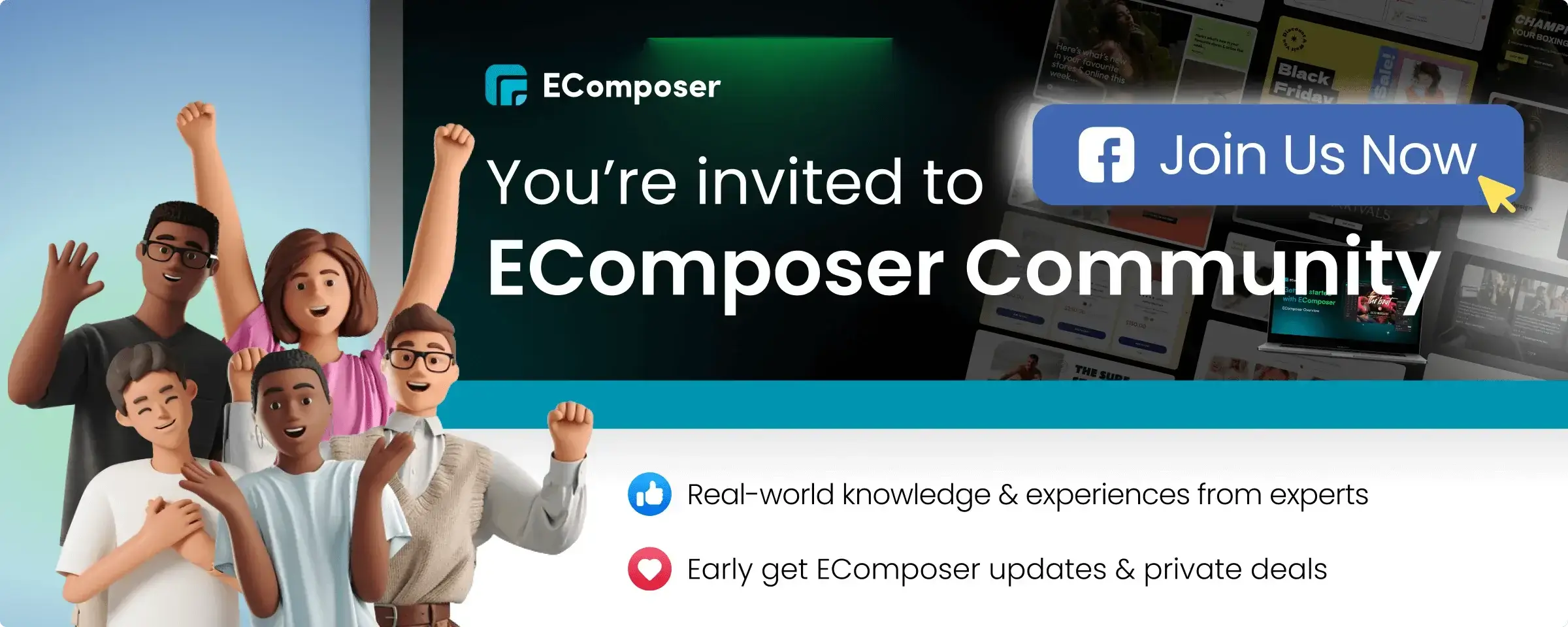






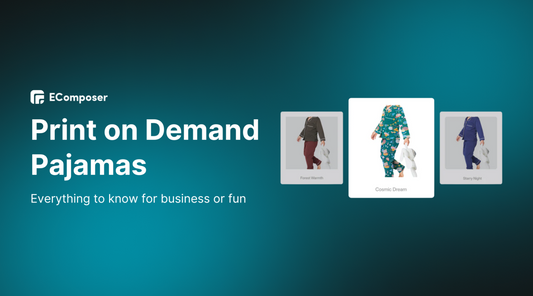
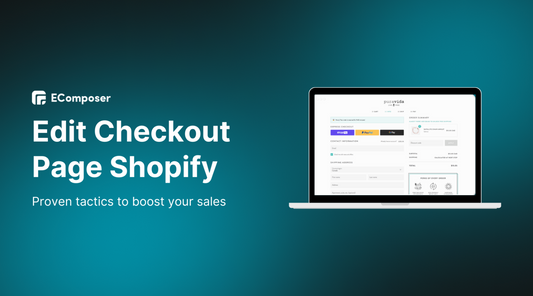
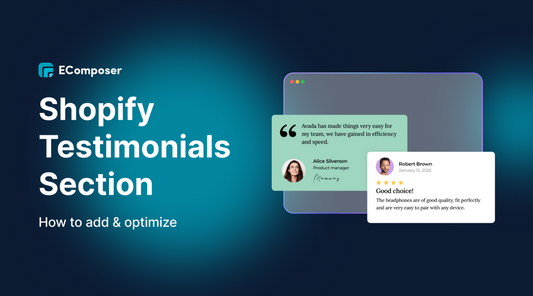
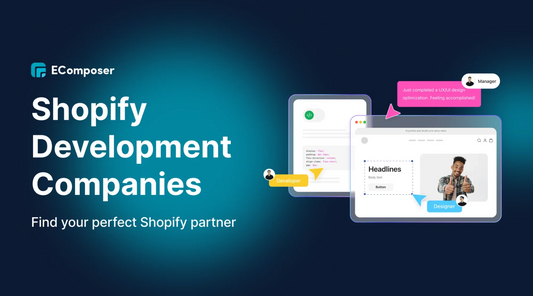
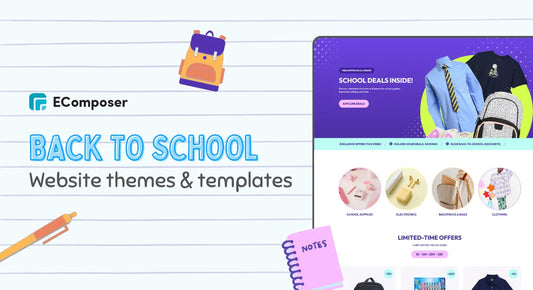







0 comments